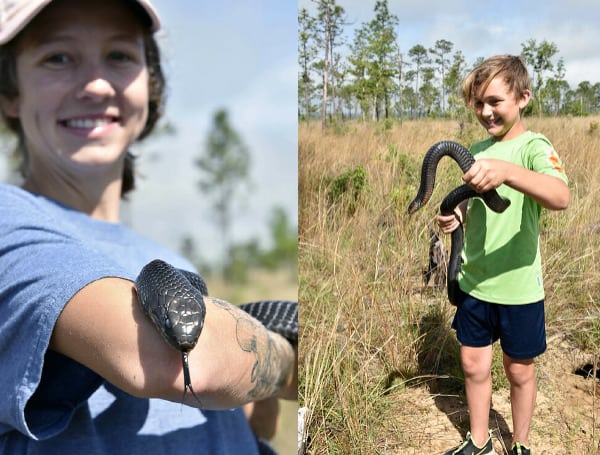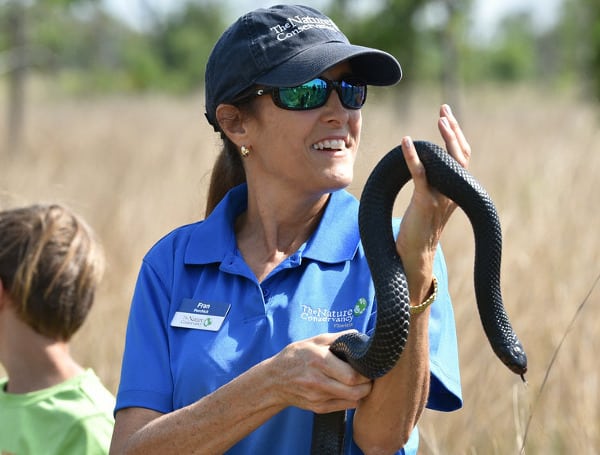On Monday, 26 young eastern indigo snakes were released in northern Florida, marking the sixth consecutive year of a collaborative program to return the native, non-venomous apex predator to the region.
The multi-partner effort brings the snakes—listed as threatened under the Endangered Species Act—to The Nature Conservancy’s Apalachicola Bluffs and Ravines Preserve (ABRP) in Bristol, to create a growing population to support species recovery in this ideal protected habitat.
The eastern indigo species recovery effort in North Florida is the long-term joint commitment of multiple nonprofit, agency, and academic partners. The partners have worked together for decades to restore and manage the habitat required by the snake, and many other species, to make the release possible.
Raised specifically for release, the 26 snakes bring the total number of indigos released to the property to date to 107.
“Releasing twenty-six eastern indigo snakes today at The Nature Conservancy’s Apalachicola Bluffs and Ravines Preserve is a great achievement for us and our partners. It’s the spirit of collaboration at the center of this project that has made it possible for us to reach the six-year milestone. The preserve is the ideal location for reintroducing this integral snake species, and that is thanks to the decades of conservation work conducted on-site by TNC and our partners,” said Steve Coates, Director of The Nature Conservancy’s Center for Conservation Initiatives (CCI).
The eastern indigo snake (Drymarchon couperi) is the longest snake native to North America and an iconic and essential component of the now rare southern longleaf pine ecosystem. It serves a critical function to balance the wildlife community by consuming a variety of small animals including both venomous and non-venomous snakes.
At over eight-feet long, the indigo often relies upon gopher tortoise burrows for shelter during cold weather. The snakes were historically found in southern Georgia, Alabama, eastern Mississippi, and throughout Florida, though their range is now far more restricted.
Largely eliminated from northern Florida due to habitat loss and fragmentation, the indigo was last observed at ABRP in 1982, until the species recovery effort began in 2017.
ABRP is the only site in Florida currently designated for indigo reintroduction. The 6,295-acre nature preserve in northern Florida’s Liberty County protects a large longleaf pine landscape carved by numerous seepage streams and is home to the gopher tortoise and the full suite of longleaf pine specialist species.
Located in the Apalachicola Bay region along the Apalachicola River, the preserve lies in the center of one of five biological hotspots in North America and is home to a great number of imperiled plants and animals.
Visit Tampafp.com for Politics, Tampa Area Local News, Sports, and National Headlines. Support journalism by clicking here to our GiveSendGo or sign up for our free newsletter by clicking here.
Android Users, Click Here To Download The Free Press App And Never Miss A Story. Follow Us On Facebook Here Or Twitter Here.



